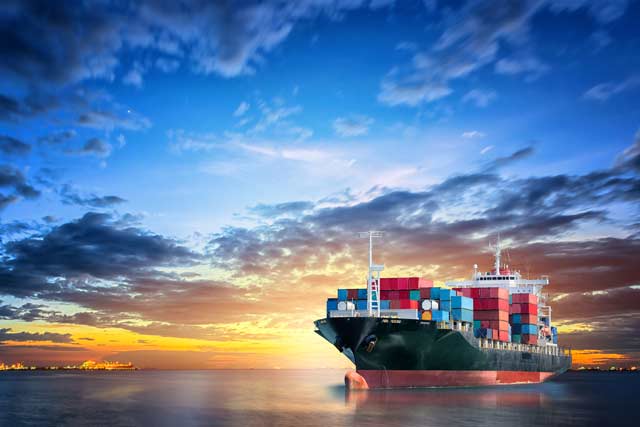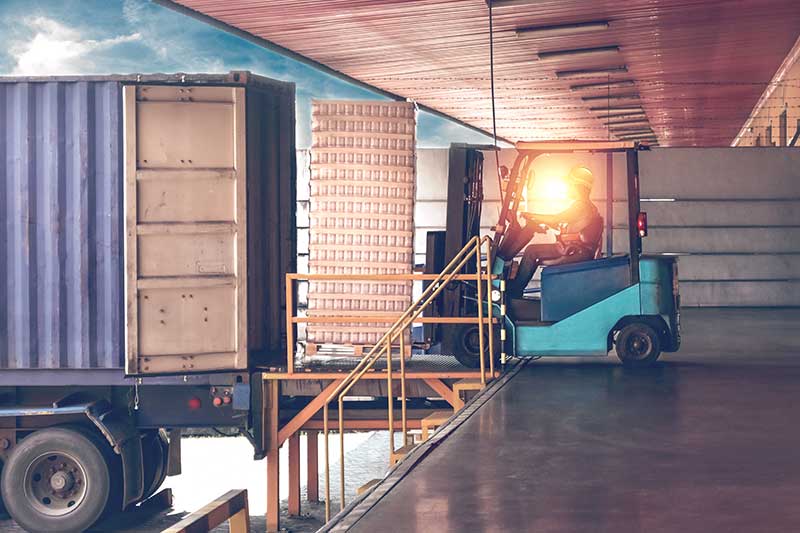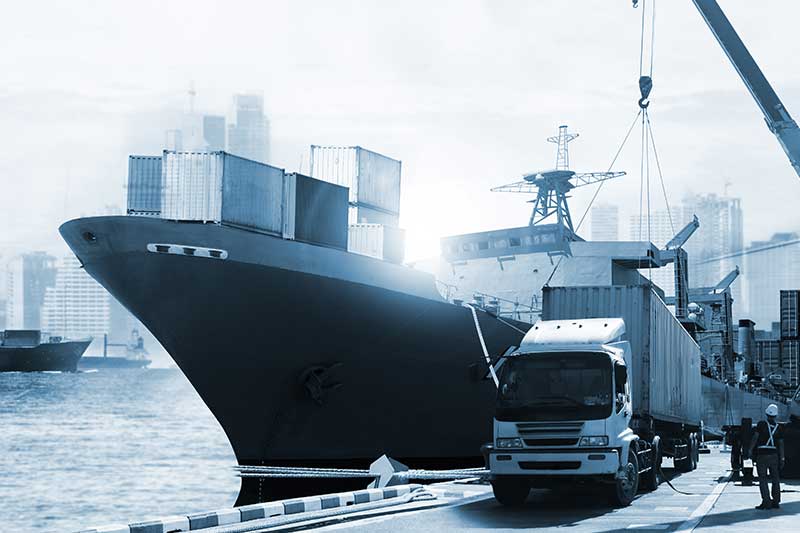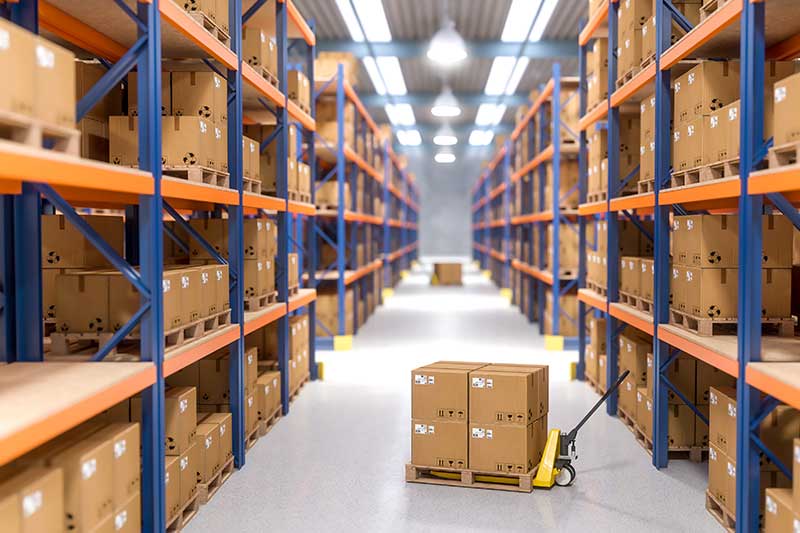Want to end your freight problems?
Revolutionize Your Freight Shipping Experience with STC Logistics!
Are you tired of navigating the complexities of freight shipping alone? Look no further! At STC Logistics, we’re your ultimate Total Source Solution for all your transportation needs. Backed by the industry-leading expertise of our parent company, Select Transportation Corporation (STC), with over three decades of experience since 1992, we bring a wealth of knowledge and innovation to the table.
Our commitment to excellence shines through our dedicated service representatives who offer expert consultation, even for the most intricate traffic departments.
With a nationwide network of secure cross-docking facilities, we possess the agility and capability to handle any job with precision and efficiency. But that’s not all! We’ve embraced technology to its fullest with our cutting-edge operating system, accessible through our user-friendly platform www.SHIPSTC.com. With pin-point tracking capabilities and a convenient smartphone application, you’ll have complete visibility of your freight every step of the way, right at your fingertips.
Say goodbye to shipping woes and embrace a seamless experience with STC Logistics. Let us transform the way you ship today!
Contact us at:
[email protected]
Solving Your LTL and TL Headaches
Solving LTL and TL Shipping Headaches: How STC Logistics Keeps Your Business Moving
In the intricate dance of supply chain logistics, every step counts. Whether you’re shipping a few pallets or filling an entire truck, the efficiency and reliability of your transportation can make or break your business. That’s where Less Than Truckload (LTL) and Truckload (TL) shipping come into play, offering solutions tailored to the specific needs of your cargo. However, navigating the complexities of LTL and TL shipping can often feel like tiptoeing through a minefield of challenges.
- Cost Inefficiencies: Traditional LTL and TL shipping models can lead to inflated costs, especially when you’re not utilizing the full capacity of a truck. With STC Logistics’ innovative consolidation services, we optimize your shipments, ensuring that you pay only for the space you need. By combining multiple smaller shipments into one cohesive load, we help you maximize efficiency and minimize expenses.
- Transit Delays: Time is money, and delays in transit can wreak havoc on your supply chain schedule. Our team at STC Logistics leverages cutting-edge tracking technology and strategic partnerships with reliable carriers to keep your shipments on track. Whether it’s LTL or TL, we provide real-time visibility into the whereabouts of your cargo, allowing you to plan with confidence and peace of mind.
- Limited Flexibility: In the fast-paced world of logistics, adaptability is key. Yet, rigid shipping schedules and limited options for customization can stifle your ability to respond to changing demands. With STC Logistics, flexibility is built into our DNA. Whether you require expedited shipping, specialized handling, or last-minute adjustments, our dedicated team is here to accommodate your needs every step of the way.
- Inadequate Communication: Effective communication is the cornerstone of successful logistics management. However, many businesses struggle with fragmented communication channels and lack of transparency throughout the shipping process. At STC Logistics, we prioritize clear and open communication with our clients. From initial booking to final delivery, we keep you informed at every stage, ensuring that you’re always in the loop and empowered to make informed decisions.
- Risk of Damage or Loss: Protecting your cargo is paramount, yet the risk of damage or loss during transit is an ever-present concern. With STC Logistics’ comprehensive insurance options and stringent quality control measures, you can rest easy knowing that your shipments are in safe hands. We go above and beyond to safeguard your cargo from pickup to delivery, providing peace of mind and protection against unforeseen circumstances.
In the world of LTL and TL shipping, challenges abound—but so do opportunities for innovation and improvement. With STC Logistics as your trusted partner, you can overcome the obstacles that stand in the way of your success and unlock new levels of efficiency, reliability, and peace of mind.
Ready to experience the difference? Contact STC Logistics today and let us revolutionize your shipping experience.
Contact us @ (973) 642-0400
Ground
- LTL – Less Than Truckload
- Direct Line-Haul LTL
- FTL – Full Truckload
- Straight Trucks
Streamlining Nationwide Installations
Logistics and Installations Synergy…
In the dynamic landscape of retail, the presentation of store fixtures, displays, and signage plays a pivotal role in attracting and retaining customers. Seamless nationwide logistics and installations become the backbone of retail operations, ensuring that stores, whether a single boutique or a nationwide chain, maintain consistency and quality in their physical appearance and brand messaging.
This logistical prowess not only guarantees the timely and efficient rollout of retail setups but also minimizes downtime, ensuring stores are visually appealing and ready to welcome customers without delay. By leveraging a network of skilled W2 professionals and cutting-edge technology, logistics companies specializing in retail installations provide a turnkey solution that addresses the complexities of distributing, installing, and maintaining retail fixtures across vast geographical areas.
This is where STC comes into play…
Let’s not waste any more time or money….
Contact us today for a free consultation on your next project.
973-642-1653
|
|
|
|
|
Important Logistical Practices For Pop-Up Store Success
Pop-up stores are becoming increasingly popular these days. As studies would suggest, a business becomes sustainable not only by having new customers. It is by building a strong and loyal customer base that will give you enough time to flourish and not just merely keep afloat. Pop-up stores are effective in boosting brick-and-mortar brands by immersing in the target market.
A pop-up store is simply a temporary space that retailers use to expand their footprints and help build their brands. Here are effective methods you can employ to optimize your pop-up store and so that it will serve its purpose well.
Find the Right Location
It is critical to choose the right location where to set up a pop-up store. Malls are opening their doors to pop-ups by offering a variety of store space and floor plans for kiosks and carts. There is an advantage if you will get a location where foot traffic is busy. Malls are consistently busy thereby giving you more chances of being noticed by shoppers. There is also an option to have a store-in-a-store set-up if you are looking for a highly relevant audience.
Preparation is Essential
Putting up a pop-up should not be done in a hurry. Although you are only going to use a small area, make sure that you have enough materials to create a design that fits your brand. Being creative in the design of your pop-up will help entice the customers to see what you can offer to them.
The use of digital technology is encouraged in order to promote interaction with the potential customers. For example, you can create an Instagram account for your store so you will have a venue to tell customers when and where your next pop-up event will be. It can also serve as a communication channel for you to provide quick answers to their inquiries.
It is also essential to teach your staff, whether they are temporary or not, about what their roles are going to be. Organize a training program that is specifically prepared for your staff to learn how to handle real customers. This is important especially when they are used to interacting with customers over the internet. Face-to-face interactions can be difficult for many people so you must ensure that your staff will wear their best game face on the day of your pop-up event.
Never oversell especially if you have an online shop since it can easily destroy your reputation as a seller. If you are using warehousing solutions, like cross-docking, take the time to prepare the stocks in order to avoid problems that may affect inventory management.
Offer Convenient Options
Shoppers nowadays are crazy about convenient ways to shop. If you are selling products that need more time to prepare, offer options for shipping and delivery. There are companies who can work with you to help out with transporting and warehousing processes of your products. Specify the delivery options, fees, and other common issues related to this style of product distribution.
Shipping Best Practices For A Seasonal Rush
Though we may not want to think about it quite yet, the holidays are nearly upon us. This means that, very soon, we will have to move on from back-to-school to the holiday shopping season, cyber Monday, Black Friday, and more. This can lead to some challenging shipping, warehousing, fulfillment, etc. issues. Fortunately, using shipping best practices (or a reliable logistics company) can make these challenges more manageable.
Here are a handful of tips to handling the seasonal rush.
Define Your Shipping Process
Part of this process of definition is to actually write things down. This will help to inform and assist volunteers and team members, during even the busiest periods, with fulfilling orders.
How is this done? For the next few orders you ship, pay close attention. If you have a fulfillment handling team, check with them. Write down each step and how long it takes to execute.
When all is written down, examine it closely. What can you do to create a more efficient process – cut back on time spent? Are there any bottlenecks?
Saving More Time
Once you’ve reviewed your process and cut wasted or unnecessary time, you can save time in other areas as well. For example, buy labels ahead of time and keep them in storage. Printing labels ahead of time is also doable if you know what the demand will be for specifically printed labels. Both printed and non-printed labels can be kept in bulk for future use.
Other Shipping Supplies
Of course, shipping supplies consist of more than just labels. So, when it comes to other supplies needed for shipping and order fulfilling, stock up on those as well to save time. Be sure to keep an accurate inventory of your shipping supplies. Not running out of something will help to eliminate costly, unnecessary delays.
Items here could pertain to printer ink, the aforementioned labels, express flat rate and priority mail packaging, and more. Do you have enough credit on your postage meter?
Setting Up a Strategy
You stocked up on supplies. You got your process all in place and defined. Now, what will your shipping charges consist of?
Below are some shipping/charge options. Determine which one, or combination, will best suit your needs:
- International shipping – This can be tricky. Just because you’re not involved in it now, doesn’t mean you won’t be in the future. As your business grows, your shipping demands may increase.
- Exact cost shipping – Whatever it’s going to cost you to ship the item, your customers will see it. That’s what they pay. If you get discounts, they’ll get discounts.
- Flat rate shipping – Here you will need to decide on a standard shipping rate that will do two things: a) cover most of your shipping costs and b) cover them most of the time. That is the rate you will charge everyone for everything.
- Free shipping – This is, of course, the most attractive shipping method for your customers. But is right for you? It can be pricey even with Shopify, Canada Post, DHL, UPS, and USPS discounts. You have to take a moment and make a very careful examination of long-distance shipping, shipping heavy items, rates, and profit margins before you offer this.
Of course, all of the above can be very nearly eliminated by partnering with STC Logistics. Even during the busiest of seasons, we can take the worry out of things like warehousing, inventory management, fulfillment, shipping, and so much more. You have enough to do, with manufacturing and running your company. Let us help you with the rest. Contact us today to find out more.
What You Need To Know About Logistics Management Software
There can be so many choices of software when it comes to logistics management that it’s hard to decide which one is best. What’s perfect for you may not be ideal for another company, and vice versa. Which software you choose could have a drastic impact on your business, so you must choose wisely.
Let’s take a look at a little bit of information as it applies to logistics management software and how to make that wise choice.
Success in This Competitive World
Internal efficiency is a huge factor in the success of today’s enterprise. Of course, the delight of its customers is also essential. Seamless logistics and a well-oiled supply chain are important if a company is going to fulfill both of those goals. Without the right logistics management software, that can be difficult.
The Basics
What should logistics management software do? Basic functions include warehouse operations that enhance efficiency and productivity, improve customer satisfaction, and save money. Everything from inventory control to supply chain planning is covered by a comprehensive suite. Additional coverage will include transportation routine streamlining, slotting and shipping, packing, and other warehouse functions. A good software program enforces greater control over operations, improves transparency, and co-opts logistics tracking software.
Seamless Integration
There are stand-alone suites and also comprehensive suites. The latter covers all needed activities. If a comprehensive suite is not utilized, you must somehow be able to experience a seamless integration between the various suites classified as stand-alone.
Capabilities held by a top rated logistics management software would include the following:
- The capability to tap into other partners and all desired 3PL.
- Draw critical information.
- In the form of actionable information, make presentations to stakeholders.
Above and Beyond
Warehouse operations management is the core of logistics software. Helping maintain supply chain control and offering visibility is the job of logistics tracking software. But, to aid tactical planning, the offer of visibility must be surpassed with superb logistics tracking software.
What does success depend on?
- Easy to use dashboards delivered to the right stakeholders (preferably, through easy to use mobile apps that facilitate anytime, anywhere access)
- Integrating all critical solutions
- A well-integrated logistics software solution
As important as visibility is, however, a “what to do next insight” must be used in combination with visibility. Among today’s successful logistics players, embedded analytics is in high demand.
Advanced analytics tools will be needed as data and business becomes more complex.
Don’t Rock the Boat With Your Software
A good logistics software system will not disrupt operations already in existence. Review functionality features before choosing your software. Consider the following for each feature:
- What problems or issues will it solve?
- What are the benefits of bringing it to the table?
- Why is it needed?
- Additionally, be able to explain how this new software will combine with your current, existing logistics operations.
How to Solve All Your Logistics Problems in One Easy Step
With all of that said, there’s a much easier way to make sure that all of your logistics are taking care of. The knowledgeable representatives of STC Logistics can help with everything from crating and packing to warehousing and fulfillment – and everything in between.
Since 1992, we have been the go-to logistics company for numerous businesses. Our credentials include SmartWay, IATA, Globallink, CNS (an IATA company), the Transportation Security Administration, and more.
Contact us today if you have any questions or would like to find out how partnering with STC Logistics can be beneficial for you and your business.
Top Tips To Find A Reliable 3PL Provider
There are numerous benefits for a scaling business when outsourcing e-commerce warehousing to a 3PL provider (third-party logistics provider). Good 3PL providers are experts in the following fields:
- Keeping track of pallets
- Paying rent
- Maintaining equipment
- Hiring warehouse workers
- All necessary operational tasks
But that’s not all. All those tasks can be completed by 3PL’s more efficiently, cheaper, and quicker than in the company’s own warehouse.
The Advantages of 3PLs
As an example of the benefits of using a 3PL, some recent data points are listed below. An outsourcing study found the following:
- 3PL fixed logistics cost reduction – an average of 23%
- 3PL inventory cost reduction – an average of 6%
- 3PL logistics cost reduction – an average of 11%
To find the perfect 3PL provider for your company, there are a handful of questions you will need to answer.
What Do You Require?
As they apply to your company, regarding your metrics and needs that matter most, where does the 3PL stand? Get the 3PL to provide answers to these questions:
- How quickly do they respond to changes?
- Do they exhibit ongoing process and cost improvements?
- In the event of a recall, how do they find a product’s location?
- How do they manage parameters for stock rotation?
Extra Offerings?
Beyond the basics, does the 3PL offer business solutions and intelligence? As an example, an introduction of you (and other e-commerce clients) to technology providers related to your field would be a nice perk offered by a good 3PL.
Can You Define Capacity and Abilities?
Look at the talent of the 3PL being considered. How deeply does it run? Nearly half of today’s shippers consider the experience of a specific 3PL in the industry in which the shipper is involved when they rate 3PLs in general.
What If…?
Disasters happen. In the case of a disaster, is the 3PL prepared? What is their plan for the following?
- Water-related transportation disruptions
- Technology outages
- Labor stoppages/shortages
- Disaster preparedness and other risks
How Is the Money?
You’ve probably heard the old adage “Money makes the world go ‘round.” Businesses rely on money – there can be no doubt. Financially speaking, how strong is the 3PL? Your 3PL is a type of partner – and a partner should have the available resources for an investment (of sorts) in your company.
Is Your Company Growing?
The ideal answer to this question would, of course, be a resounding “Yes!” So, let’s just say that your business is growing exponentially. Will that 3PL be able to keep pace? Key factors are scalability and flexibility. Not only must they be able to handle your current requirements, as requirements change in the future (while your company grows), your chosen 3PL must be able to adapt.
Technology Is Constantly Changing – Is the 3PL?
If there’s one thing that’s constant, particularly where technology is concerned, it’s change. Ironic, isn’t it? Find out how much of the annual IT budget of the 3PL you are considering is spent on innovation-related projects. Your company’s roadmap and IT strategy must be completely aligned with the 3PL’s.
The representatives of STC Logistics can answer all of the above questions in the most positive and helpful way possible. Our 3PL capabilities are exceptional. We are committed to providing the most efficient and effective solutions in logistics and technology. We place no limit on destination, size, or weight – worldwide. We will deliver flexible, superior solutions, on a daily basis, to meet the logistics requirements of our clients. Contact us today to find out more.
What You Need To Know About NMFC Codes
In the logistics industry, topics about technology and chain efficiency are widely discussed. Oftentimes, certain technical lingo can be confusing for people who are not seasoned industry specialists or thought leaders. In this post, we are going to explain what NMFC codes are why they are important to companies in the freight and logistics industry.
What are NMFC Codes?
Regulators within the logistics industry, referred to as NMFTA (National Freight Traffic Association), created NMFC (National Motor Freight Classification) codes when they realized there was a need for more effective standardization. This body created a classification system for every type of freight in an effort to standardize freight pricing and establish fair measures.
The system has 18 different freight classes and it is catalogued with NMFC tariffs. Numbers between 50 and 500 are used to define the 18 freight classes, and are often used by carriers and shippers to set shipping rates.
Four primary factors that help to define a freight class include:
- Stowability: This refers to how easily a product’s dimensions can easily fit into the carrying container or vessel. If a product is extremely large, hazardous, or extra heavy, it can be difficult to stow on a trailer, thus raising costs. The higher the stowability, the lower the classification of the freight.
- Liability: Products that are fragile, refrigerated, or perishable pose a greater liability and so they are classified in a higher class.
- Ease of handling: When freight is easy to handle, it is classified in a lower class. If freight is difficult to handle, it is placed in a higher class.
- Density: The higher the amount of space a shipment takes up on a trailer relative to its weight, the higher the class it is placed in.
Carriers and shippers use these factors to determine the cost of moving freight. If the freight cannot be accurately classified, it may lead to dangerous situations and inefficiencies.
How to Find the Correct NMFC Number
In order to find the NMFC number to your specific shipment, you need to consult with a freight company. The freight company will help you classify the shipment, which will then help to determine the shipping costs. It is important to deal with transport providers who use provisions of the NMFC because they are the only ones allowed to participate in the classification system. The disadvantage of using freight companies, which do not include tariff provisions of the NMFC in contracts, is that they can set rates as they see fit.
The Importance of the NMFC Number
Before shipping your packages, always ensure that you find out the NMFC number that applies to your intrastate or foreign shipment. This number will ensure that you are fairly charged for the shipments. If you don’t have the NMFC number, you will not have a baseline to determine if you are being overcharged for shipping.
Understanding The Basics Of Freight Class Calculations
To determine which NMFC class one’s shipment falls under, he or she must first calculate the freight class codes. By doing this, buyers and sellers can estimate their freight shipping costs with greater accuracy and ultimately improve their bottom lines. When it comes to freight class calculations and shipment preparations, there are various important details to keep in mind:
An Overview of Freight Class Factors
- Density: This is the measurable amount of space your freight takes up (measured by pound per cubic foot). Oftentimes, it is used to determine one’s freight class code and freight shipping cost.
- Ease of handling: This indicates if one’s shipment requires special attention, is hazardous or fragile, and is easy or difficult to handle.
- Liability: High value commodities and freight often belong to a higher freight class because of the increased risks of theft and/or damage.
- Stowability: Is your freight stackable, hazardous, flammable, or perishable? These factors often determine if your goods can be shipped with other materials. This, however, depends on the regulations that apply to each case.
How to Calculate Freight Class
Now that you have a basic understanding of freight class, below are the important steps to take when calculating freight class:
- Measure the depth, width, and height of each item in the shipment (make sure that you are measuring to the farthest points as well).
- Multiply the three measurements to acquire the total cubic inches of the shipment (height x width x depth). If you are shipping multiple items, repeat the step for each item and then add everything up at the end.
- Calculate the cubic feet of the shipment by dividing the total cubic inches by 1,728.
- Finally, calculate the density of the shipment (pounds per cubic foot) by dividing the shipment’s weight (in pounds) by the total cubic feet. If you are shipping multiple items, remember to first add the weight of each piece together before dividing.
Why are Freight Class Calculations Important?
Also known as NMFC (National Motor Freight Class) codes, freight class codes are a set of standardized freight pricing that ensures fair practices within the freight industry. These codes often come in handy when you are shipping freight that is considered less-than-truckload (LTL). In addition, NMFC codes determine the transportability of your shipment and how much fees you have to pay.
Reducing Freight Class Shipping Charges
Since density is the main factor that is considered during freight shipping, it is a good idea to keep your dimensional weight low. This means that your shipment should take up as little space as possible on the truck to lower freight classification and increase cost savings. Another method is to accurately classify what you are shipping so that your company does not incur additional costs from classification errors.
If you are using a pallet or crate for your shipment, be sure to factor the weight of the packaging when calculating the weight of the shipment. This is important as packing materials can greatly affect the final weight of the shipment, its shipping class code, and cost.
When Do You Need An On-Board Courier?
Today, a wide range of logistics solutions exist to transport materials and substances of different classifications and priorities. Certain goods need to be transported by hand and this often leads to companies using the on-board courier (OBC) option. Also known as hand carry shipments, OBC involves the expedited transportation of fragile goods, perishables, antiques, or other materials of extreme importance that are needed in an emergency. As the items often require someone to hold it during the entire logistics process, the courier will carry the item onto the plane and then deliver it by hand to the client’s location.
A Growing Demand for On-Board Courier Services
The need for OBC and other specialty air shipping services has been gradually growing from its all-time-high since 2001. If you want to know if an on-board courier service is the right choice for you, you have come to the right place!
When Should You Use On-Board Courier Services?
- When the buyer or seller needs it the item urgently
From sentimental items to industrial materials, many items are needed urgently across the country or the world. In this case, using an on-board courier service is recommended as it is one of the fastest methods of getting the item to its destination.
- When the items are perishables
Various multi-national organizations depend on a few high value products that might require testing or certification on a global stage. Because some of their samples may be perishable, they need to expedite their shipments securely via OBC. In fact, healthcare companies, chemical companies, and biological research organizations often use such services to transport their perishable and high value samples and products.
- When high value commodities need to be shipped
Certain items might cause the company to lose millions of dollars if they get damaged or lost along the way. In this case, these companies are better off shipping their items via OBC. Common examples include high-end jewelry and tech-related prototypes.
What are the Benefits of On-Board Courier Solutions?
Although it might seem redundant to fly someone halfway across the world to send a package or two in hand. Certain items, however, validate the OBC model. Below is a quick look at some of the main benefits of using OBC solutions:
- Highly secure
When an item is shipped via OBC, it will be listed as a property of the courier. This means that the item will always remain in the person’s possession. As most carry-on sized cargo is not checked into the aircraft, there are fewer chances of the item being sabotaged, stolen, mixed-up, and tampered.
- Easy to track
Given the nature of the goods being transported, the courier will provide constant updates for the client, e.g., live updates of the asset’s current location. This means that the client can enjoy optimal control of their shipment. Compared to regular courier services, OBC services tend to utilize the safest and fastest routes rather than just the economical ones.
- Protects high-value assets
specialty aviation components, high-value antiques, and Intellectual Property (IP) documentation are assets that are too sensitive to be delivered via regular courier services. Therefore, on-board courier services ensure that these items can be shipped at a moment’s notice while keeping their intended use and/or value intact.



























